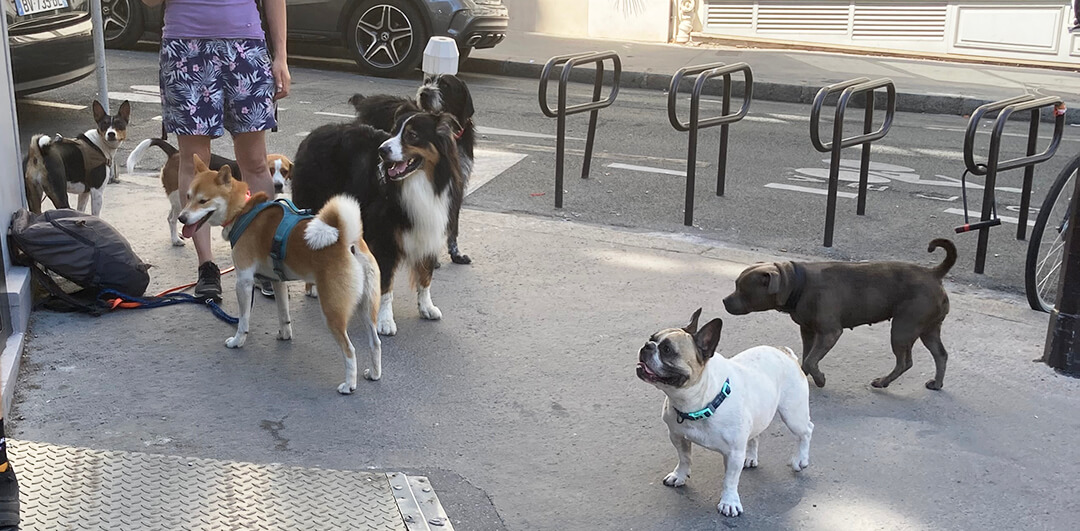Last month, my sister-in-law and my almost-13-year-old niece, Ava, spent two weeks in France, visiting my sister-in-law’s mother and stepfather, who live in Paris. Ava has been a dog lover since before she could walk, so I gave her an assignment, to take photos of dogs in Paris.
I’ve always been interested in the cultural differences between how dogs are handled and treated in different countries and I discussed this with her a bit; she and her mom stopped at my house on their way to the airport, because I dog-sat their little dog, Alice, while they were gone. But, in truth, I wasn’t actually concerned with the photos that Ava might get for me; I had an ulterior motive. Mostly I was trying to give Ava a photography job that would (I hoped) keep her engaged with the living scenery when traveling, to keep her eyes open. Ava has an artistic eye, and as someone who studied photojournalism, I know that being given an assignment to take pictures can sharpen and focus your awareness on your surroundings.
Ava did take and send me some pictures of dogs and dog owners. We’re going to be looking at them and discussing her trip to France at the end of this week, when our family will get together again to celebrate her 13th birthday. But here’s the funny thing: Ava must have told her grandmother that she was taking photos of dogs for me. This morning I received a photo and email from her grandmother, Olivia.

“I heard you need pictures of dogs in France,” Olivia explained. Well, I guess my covert mission needed to be exposed, and I’ve written back to Olivia to recuse her from the assignment and sharing the actual purpose of my assignment for Ava with her.
But after writing the email, I looked at Olivia’s snapshot again. She had actually captured several very interesting things. The longer I look at this photo, which she captioned as “a dog walker in Paris,” the more I see. Look: What do you see?

Here are the things that are most interesting to me:
Of the seven dogs visible in the photo, only one (possibly two) is leashed. Despite this, they are all just hanging out in a relaxed fashion, waiting for their walker, who appears to be taking a snack break.
The two dogs on the right may or may not be with the walker; they are slightly removed from her, whereas the other dogs are arranged in a circle around her. So those two unleashed dogs may simply be waiting for their owners to come out of the store or restaurant. They are unleashed but perfectly safe and comfortable waiting on the sidewalk.
All but one of the dogs resemble purebreds. The dog on the far right might be, too; I’m not familiar enough with all the bully-type breeds to know what she is or might be.
All seven of the dogs are in good weight and look fit. Even French dogs look more slender than their American counterparts!
The white dog on the right appears to be a French Bulldog – but he or she has much more of a nose than the French Bulldogs you see here. I love that the dog’s face isn’t as smushed in the exaggerated way the dogs here often appear.
How do dogs become so habituated and well-behaved that they can safely be taken out with a dog-walker off leash in the middle of a busy city? Are dogs being lost and hit by cars at a rate we Americans would find unacceptable? I’m fascinated – and I just might have to go to Paris to find out! I’m pretty sure I could stay with Olivia…






